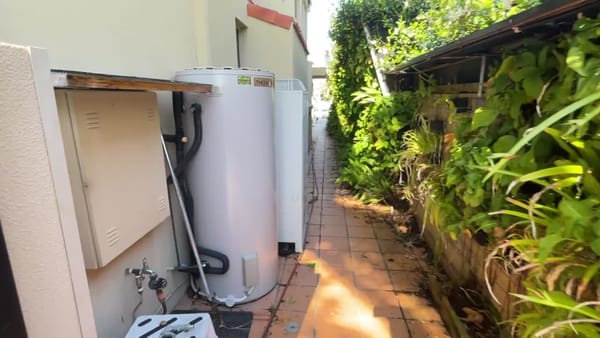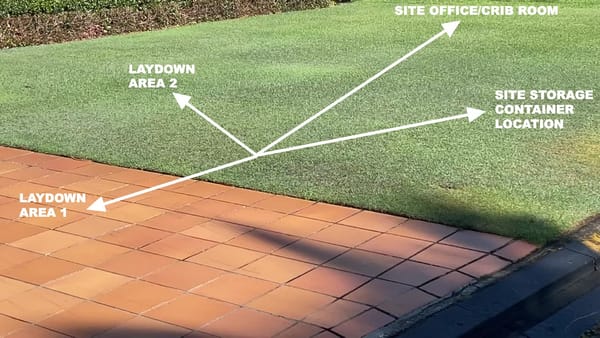If you’ve ever walked onto a construction site at the start of a construction project and seen survey pegs, silt fences, and heavy machinery rumbling into position, you’ve watched the setup for one of the most important early stages of the construction process: excavation work.
In simple terms, excavation is the planned removal of soil (and sometimes rock) to form a man-made cut below ground level so we can place strong foundations, install services, or create space for basements, tanks, roads, and similar structures. Done well, it sets a job up for a clean run. Done poorly, it can threaten structural integrity, delay the next step, or create serious safety issues.
In this post we break down the excavation, where and when you use it, the different types of excavation, the potential hazards to watch for, and practical best practices that keep the safety of workers front and centre.
What Is Excavation?
Excavation in the construction industry is the controlled earth removal to form trenches, pits, basements, drainage ditches, storm drains, or broader platforms. It includes planning, site preparation, digging, hauling, stockpiling, shoring, and backfilling. A proper excavation respects the soil type, soil conditions, angle of slope, local regulations, and the purpose of the engineering projects it serves.
Think of excavation as three things working together:
- Geometry – the shape of the man-made cut (depth, width, batter, or benching).
- Ground – the type of soil (e.g., Type B soil, Type C soils), rock, wet ground, contamination, or unsuitable slope materials.
- Controls – safety measures and support system (benching, trench boxes, temporary support, use of protective systems) managed by a competent person under safety regulations.
Common outcomes of excavation:
- Space for basement excavations and wall shafts
- Trench excavation for water lines, sewer lines, electrical cables, natural gas, and communication conduits
- Earth excavation and platforming for building pads and roads
- Channel excavation for open drains and drainage systems
- When Do You Need Excavation? (Project Types and Use Cases)
You’ll need excavation whenever the design calls for space below or reshaped ground above. Here are typical construction project scenarios:
a) Residential and Small Building Sites
- Site pad prepration: cut and fill, site scrape, benching
- Footings and strip pads for strong foundations
- Wastewater treatment tanks (larger/rural blocks/council permitting/available space to discharge irrigation)
- Drainage ditches and storm drains to manage runoff, reduce soil erosion, and protect footings
- Installation of underground utilities: water lines, sewer lines, electrical cables (and telecom)
b) Commercial and Industrial
- Multi-level building site basements, lift pits, and wall shafts
- Service corridors for fire, potable water, and power
- Slab-on-grade prep across a large area with tolerance checks and precise measurements
- Heavy plant access platforms in rough terrain for a heavy industrial contractor
c) Infrastructure and Civil
- Roadworks, embankment cuts, and channel excavation
- Culverts, drainage swales, detention basins, and drainage systems
- Linear trench excavation for long runs of storm drains, reclaimed water, or gas mains
- Rail and airport works involving bulk earth excavation
The Main Types of Excavation
Different jobs need different methods. Below are the core specific type of excavation categories used on sites:
Earth Excavation
Bulk digs in soil for pads, batters, and platforms. Often includes battering to a safe angle of slope based on soil type. Planned to reduce risk of injury and avoid over-excavation.
Rock Excavation
Removal of rock using rippers, breakers, or controlled blasting (where allowed). Requires detailed thorough site survey, approvals, local regulations compliance, and more robust support system planning.
Trench Excavation
Narrow cuts for services and pipelines. Hazards include face instability, overhead power lines near access routes, and buried services. Controls often include trench boxes, benching, or shoring as temporary support.
Basement Excavations and Wall Shafts
Deep digs confined by property boundaries. May need retention systems, de-watering, and hydraulic systems like well-points. Always check water quality of discharge.
Channel Excavation
Shaping open channels/ditches for drainage systems. Requires attention to falls, scour protection, and soil erosion controls.
Equipment and Tools (Choosing the Best Machinery for the Job)
Heavy equipment choice depends on depth, access, soil conditions, and haul distances. A smart selection improves productivity and the safety of workers.
Primary Large Machines
- Excavators (tracked and wheeled): versatile digging with buckets, rippers, and hydraulic systems attachments
- Bulldozers: push, stockpile, and form batters
- Loaders & Skid Steers: load trucks, trim pads, manoeuvre in tight spaces
- Dump Trucks: haul spoil; match truck size to excavator pass count
- Compactors/Rammers: back-fill density, avoiding future settlement
Attachments & Specialist Plant
- Rock breakers, augers, rippers for tough ground
- Vacuum excavator for delicate digs around electrical cables, natural gas, and fibre (a combination of water and suction)
- Concrete pump to place footings quickly once trenches are inspected
- Trench boxes and proprietary shoring (not “digging tools,” but essential support system)
Matching Equipment to Conditions
- Type B soil and Type C soils may require shallower batters, benching, or shoring
- Wet ground: consider tracked machines and stable access pads
- Narrow excavation: small excavators, chain trenchers, or vacuum excavator
- Rough terrain: tracked gear with low ground pressure and managed vehicular traffic routes
Ground Conditions & Geotech Basics (Why Soil Type Matters)
You don’t need to be a geotech to understand the basics that drive proper excavation. A thorough site survey and a short written report from a professional engineer or geotech can prevent expensive surprises.
Soil Type & Stability
- Type B soil: medium stability; may stand at steeper angle of slope with supervision by a competent person
- Type C soils: weakest and most unstable; use gentler batters or full shoring
- Rock: strong but fractured zones can suddenly loosen under vibration
Water and Weather
- Wet ground reduces bearing and can collapse trench walls
- High tables may require de-watering; test water quality before discharge
- Rain events demand drainage ditches and on-site drainage systems to manage inflows and prevent soil erosion
Overhead and Underground Services
- Overhead power lines affect crane and truck access routes
- Underground water lines, sewer lines, electrical cables, and gas must be positively located—use service plans and vacuum excavator test holes
Key Challenges in Excavation (What Trips Jobs Up)
Even with careful planning, the ground can surprise you. Here are the common headaches and how to manage them:
Hidden Services and Damage
Potential hazards: striking electrical cables, natural gas, or sewer lines.
Controls: service locators, mark-outs, pot-holing with vacuum excavator, competent person oversight, permit-to-dig, and safety protocols at the start of each shift.
Unstable Faces and Collapses
Potential hazards: trench wall sloughing, face falls in Type C soils, or unsuitable slope materials.
Controls: use of protective systems—benching, trench boxes, shoring, engineered temporary support.
Groundwater and Wet Ground
Potential hazards: flooding trenches, reducing stability, contaminated water quality.
Controls: dewatering design, sump pumps, lined discharge, and erosion control.
Access, Egress, and Traffic
Potential hazards: uneven ramps, rough terrain, poor visibility, vehicular traffic conflicting with pedestrians.
Controls: one-way haul routes, spotters, exclusion zones, plant–people separation.
Environmental Constraints
Potential hazards: natural habitat disturbance, sediment runoff, noise/dust/vibration.
Controls: drainage systems, silt fences, stockpile management, stabilised site entries, and local regulations compliance.
Tolerances and Rework
Potential hazards: out-of-level pads, over-excavation, clashes with set-out.
Controls: precise measurements, survey control, hold points with a professional engineer
FAQs
1) What is excavation in construction, in one sentence?
It’s the controlled removal of soil or rock below ground level to create space for foundations, services, or other various purposes like drainage systems or basement excavations.
2) Who decides the safe slope or support for a trench?
A competent person assesses soil conditions and chooses the safe angle of slope, benching, shoring, or trench boxes, following safety regulations and local regulations—and escalates to a professional engineer if needed.
3) Why is a vacuum excavator recommended around services?
It uses a combination of water and suction to safely expose assets, cutting the risk of injury and damage.
4) How do we prevent environmental problems during excavation?
Install drainage ditches, manage water quality when dewatering, stabilise stockpiles, and protect any nearby natural habitat to reduce soil erosion.
5) What should be in the excavation written report?
Daily inspections, precise measurements, photos, service locations, support system details, test results, changes in soil conditions, and sign-offs—kept by the team leader or supervisor.
6) What’s the best machinery for tight service trenches?
Small excavators with narrow buckets and a vacuum excavator for potholing; use trench boxes for temporary support when required.
7) What if we hit wet ground during a dig?
Pause, reassess your method, manage inflows, check water quality for discharge, and confirm a safe angle of slope or shoring plan before continuing.
8) How do we keep people safe around large machines and traffic?
Set plant–people separation, spotters for vehicular traffic crossings, clear haul roads, and enforce personal protective equipment and safety protocols.
Further Reading


























